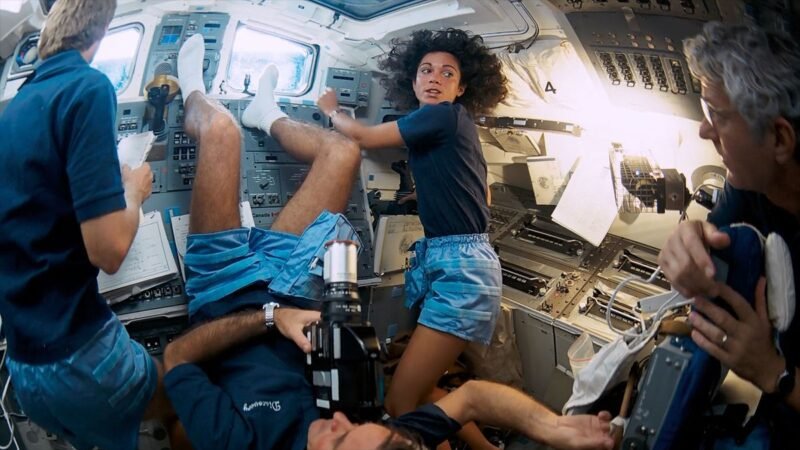Summary Points
-
Documenting Space History: James Neihouse presented framed film roll labels from the STS-41G space shuttle mission, which included footage for the 1985 IMAX documentary "The Dream is Alive," celebrating its 40th anniversary.
-
Cinematic Milestone: "The Dream is Alive" was the first giant screen film to depict life in space, capturing unique astronaut footage, and was narrated by journalist Walter Cronkite.
-
Vision from NASA and IMAX: The film concept originated from a discussion between astronaut Michael Collins and IMAX co-inventor Graeme Ferguson, leading to successful collaborations and subsequent IMAX space films.
- Future of the Film: Neihouse is advocating for a digital restoration of "The Dream is Alive," with original film negatives stored in Los Angeles, emphasizing the need to preserve this significant contribution to space storytelling.
The Dream is [Still] Alive: First IMAX Film Shot in Space Celebrates 40 Years
The skies above Earth hold stories of human ingenuity and courage. One of those stories revolves around "The Dream is Alive," the first IMAX film shot in space. This groundbreaking documentary premiered 40 years ago, showcasing life aboard the Space Shuttle.
Recently, a celebration took place at the National Air and Space Museum’s Steven F. Udvar-Hazy Center. During the event, James Neihouse, the film’s cinematographer, shared a treasure trove of history. He presented framed film roll labels from the 1985 shuttle mission, which included astronaut handwriting. These labels mark a pivotal moment in cinema and exploration.
The 37-minute documentary features stunning footage captured by astronauts. Viewers witness activities such as the capture and repair of the Solar Max satellite. Walter Cronkite, an iconic journalist, narrated the film, adding to its allure. Neihouse expressed pride in donating the labels to the Smithsonian, where they will accompany an IMAX camera from the mission.
The connection between the film and the museum runs deep. The idea for shooting an IMAX film in space arose from a discussion between Apollo 11 astronaut Michael Collins and Canadian filmmaker Graeme Ferguson. Collins suggested flying an IMAX camera aboard the space shuttle, sparking the dream of capturing space on film. Ferguson embraced the notion, despite initially asking, "What’s a space shuttle?"
Moreover, the museum evolved into a focal point for IMAX films. Collins recognized the impact these films had on visitors, believing that an IMAX movie shot in space would amplify the storytelling of astronaut life. Funding from Lockheed made this venture possible. Thus, the film emerged not as mere promotional material, but as a tool for education and inspiration.
"The Dream is Alive" offers a unique glimpse into spaceflight, letting viewers experience aspects of the mission without leaving Earth. Former astronaut Marsha Ivins, who participated in the film, recalled her moments of vulnerability during water survival training. She emphasized that while the experience was challenging, it built a lasting friendship with IMAX.
The event concluded with a reminiscence screening of the documentary. Despite its age, technology continues to enhance the film’s potential. Plans are underway to rescan the movie for high-resolution digital projection. Neihouse leads this initiative, ensuring that future audiences can enjoy a pristine version of this historic film.
As humanity continues to explore the cosmos, "The Dream is Alive" remains a beacon of inspiration and hope. It captures the spirit of innovation and the joy of discovery, reminding us of our boundless potential. The story is far from over; advancements in technology promise to amplify its legacy for generations to come.
Continue Your Tech Journey
Dive deeper into the world of Cryptocurrency and its impact on global finance.
Stay inspired by the vast knowledge available on Wikipedia.
SciV1

